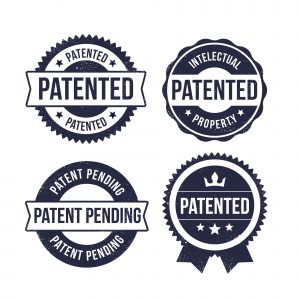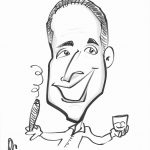
Patent Claims
A First-Time Applicant Primer
Introduction
Almost all first-time patent applicants are uncertain about what they are obtaining when it comes to patent rights.
Understandably, first time applicants cannot be expected to fully comprehend how patents work, let alone the comprising elements of a patent application.
Patent applications are made-up of different elements, and this article will review in detail particularly what is involved with claims.
Patent Application Parts
What are the elements of a patent application?
In Canada, a complete patent application should contain an abstract, description, drawings, and claims.
The description should ideally be broken down into a title, background, summary, drawing legend, and a thorough description of at least one operable embodiment of the invention.
Claims are arguably the most important part of the patent application.
What Are Patent Claims?
Patent claims define the scope of your invention.
When it comes to patent enforcement, the courts will consider what has been claimed in the patent application.
So accordingly, a patent must explain explicitly the invention for which exclusive rights are claimed.
Thus, patents must have a section providing claims.
How Do Patent Claims Work?
Patent claims are constructed to provide a written explanation of, ideally, the subject invention’s broadest embodiments.
In professionally drafted claims, some similarities can be noted including lists of invention elements, how those elements cooperate, and broad descriptive wording.
First-time applicants don’t realize that very often it is the claims that take the longest time to prepare.
Many first-time applicants tend to fixate more on the drawings because pictures are easier to comprehend than mechanical sentences.
For patent enforcement however, patent claims are what remains vital.
Patent claims typically have a preamble followed by a description of essential elements that comprise the subject invention.
How Many Patent Claims Are Required?
Very often first-time applicants desire claims on a basis of “more is better”.
To an extent, this statement is true.
However, there are practical considerations to determining how many claims should be in a patent application.
Obviously the most basic consideration is cost – a request to include an inordinate amount of patent claims takes more time, effort, and therefore money.
Patent claims are drafted from scratch, and are not one-size-fits-all.
Putting aside cost, there is a need to be clear in what the claimed invention(s) is / are.
Also, different countries / jurisdictions have different rules regarding patent claims.
Some rules differ in terms of the number of allowable claims (and the cost for supporting those claims).
Other rules differ with respect to what is and is not patentable subject matter.
Yet other rules are directed to how patent claims are to be stated (in terms of format).
Still other rules place constraints on how inventions (and the exclusive rights thereto) can be stated (in patent claims).
Do Patent Claims Change?
When an application is first drafted, claims are stated based on both what the perceived invention is as well as assumptions of clarity in communication.
In other words, just because something is in writing does not mean that thing is stated clearly.
What one person reads and understands may not be what another person reads and understands.
Moreover, as attested to above, there are numerous rules for how claims are to be written.
As such, there can be much room for interpretation as to how those rules are applied in each case (regardless the attempt to be universally uniform and objective).
During patent prosecution, it is often necessary to amend patent claims.
Depending on how amendments are achieved, often initial claims look very different from finally granted claims.
Complicating this matter is filing the same application in different countries / jurisdictions (co-pending applications).
The prosecution of numerous co-pending applications can become challenging at the least.
Aside from a possibility of confusion, harmonizing patent claims in different jurisdictions is extremely difficult.
Wording in one jurisdiction or country, regardless how sensible or generic, can unbelievably cause havoc in another jurisdiction or country.
As such, even though the heart of the invention maybe the same in multiple jurisdictions, very often patent claims state these inventions in a differing manner.
How Are Patent Claims Enforced?
For enforceability, a patent claim must be understandable to a person of ordinary skill in the art.
In other words, a person must be able to read and understand the patent application, including the claims, to determine what the scope of the subject invention is.
A patent application must clearly convey to a relevant audience the scope of protection sought.
A patent application must also be a forthright disclosure of all essential elements of the subject invention.
Upon patent expiration, any person of ordinary skill in the art must be able to implement a working embodiment of the subject invention.
Patent claims are largely responsible for ensuring a person of ordinary skill can understand the scope of the invention.
The claims are what are scrutinized by the courts, and ultimately the claims determine whether there is any infringement and / or remedy.
Without valid claims, a patent application or patent grant is void.
Why Are Patent Claims Complicated?
Understanding patent claims can be complicated to non-patent agents and non-patent examiners.
Much of the difficulty in understanding patent claims comes from the form in which claims tend to be written.
First-time applicants should think of a patent application generally as a recipe card.
In that sense, a recipe provides both essential ingredients, as well as directions on how to prepare or mix those ingredients.
In that sense, patent applications and patent claims are no different.
A patent application should be written out much as a recipe card in a sense.
Patent claims therefore need to spell out a list of essential ingredients as well as how those ingredients are combined.
The patent claims need not explain how the invention works as much as what is required to assemble and operate the invention.
For example, consider if you are reading the instructions for a lawn mower (including assembly).
An instruction manual will provide pictures as well as instructions on how to assemble parts together for safe operation.
The instruction manual will also explain how to start up the lawn mower for safe operation.
The instruction manual will not however, explain how fast the blades are rotating or why they are rotating at that speed.
The instruction manual will similarly not explain or discuss the best principles of lawn mowing and how to raise a rich green lawn.
Patent claims are similar in that sense.
Therefore, even though patent claims may read strangely at first glance, they make sense when understood considering the above.
Once people learn to read patent claims, understanding them becomes easier and more manageable.
Next Steps?
As a first-time applicant it is important to understand patent claims.
A frank and open discussion with your patent agent can provide insight into what your final product will look like.
Frank discussion with your patent agent will also provide insight into how your patent claims may change, if at all, during patent prosecution.
As a first-time patent applicant, it is important to become informed and educated.
Do not be afraid to ask your patent agent questions, as the more you learn the better your patents will be in terms of quality and enforceability.
More information on patents can be found on our web site.

Readers of this article should be aware that over time the above links will naturally expire and become non-functional.
Printouts and PDF records are recommended for anyone looking to historically preserve information presented in the above links.
None of the information in any of our articles constitutes legal advice.
None of the information in our articles constitute advice as registered patent and trademark agents.
Pnc IP Group bears no responsibility for the accuracy of third party links.
All legislation, regulations, practice notices and practice manuals quoted or referenced in any article are quoted or referenced as they existed.
Pnc IP Group bears no responsibility for updates and changes to legislation, regulations, practice notices, and practice manuals.
All readers accept these articles as being written accurately for the time they were published.
All readers accept the accuracy and correctness of any article varies by time, statutory and regulatory amendments, case law, and practice updates.
All readers are forewarned to obtain independent legal advice.
All readers are forewarned to obtain independent registered patent and trademark agent advice.
Images for this article, including the feature image for this article were generously provided by licence through Freepik.com.
AI Image generation by Vecstock via Freepik.com.
Visit our Services page to learn more about Pnc IP Group’s Patent services.
If you have questions regarding the above, feel free to contact us.
Any patents, trademarks, or technologies referenced in this article are owned by their respective owners.
Questions regarding this article can be directed to Tapas Pain.
Pnc IP Group are licensed lawyers and registered patent and trademark agents.
Pnc IP Group has a history of serving the greater York Region, greater Toronto area since 2003.
Pnc IP Group is located in Vaughan, Ontario, and offers in-person visits by appointment.
Call us and book your appointment today, or speak with us by telephone anytime.
Your calls are always welcome, and never hesitate to ask us your questions.
These articles and opinions do not express or constitute legal advice.
You can also often find us on search engines like Google using any of the following search terms.
Intellectual property lawyer Toronto, intellectual property law firm Toronto.
Patent filing services, patent application services, patent services Canada, patent lawyer Canada, patent lawyer Toronto, patent agent Canada.
Trademark application Canada, trademark lawyer Toronto, trademark lawyer Canada.
You can also often find us on other search engines using any of the following search terms.
Intellectual property lawyer Toronto, intellectual property law firm Toronto.
Patent filing services, patent application services, patent services Canada, patent lawyer Canada, patent lawyer Toronto, patent agent Canada.
Trademark application Canada, trademark lawyer Toronto, trademark lawyer Canada.



